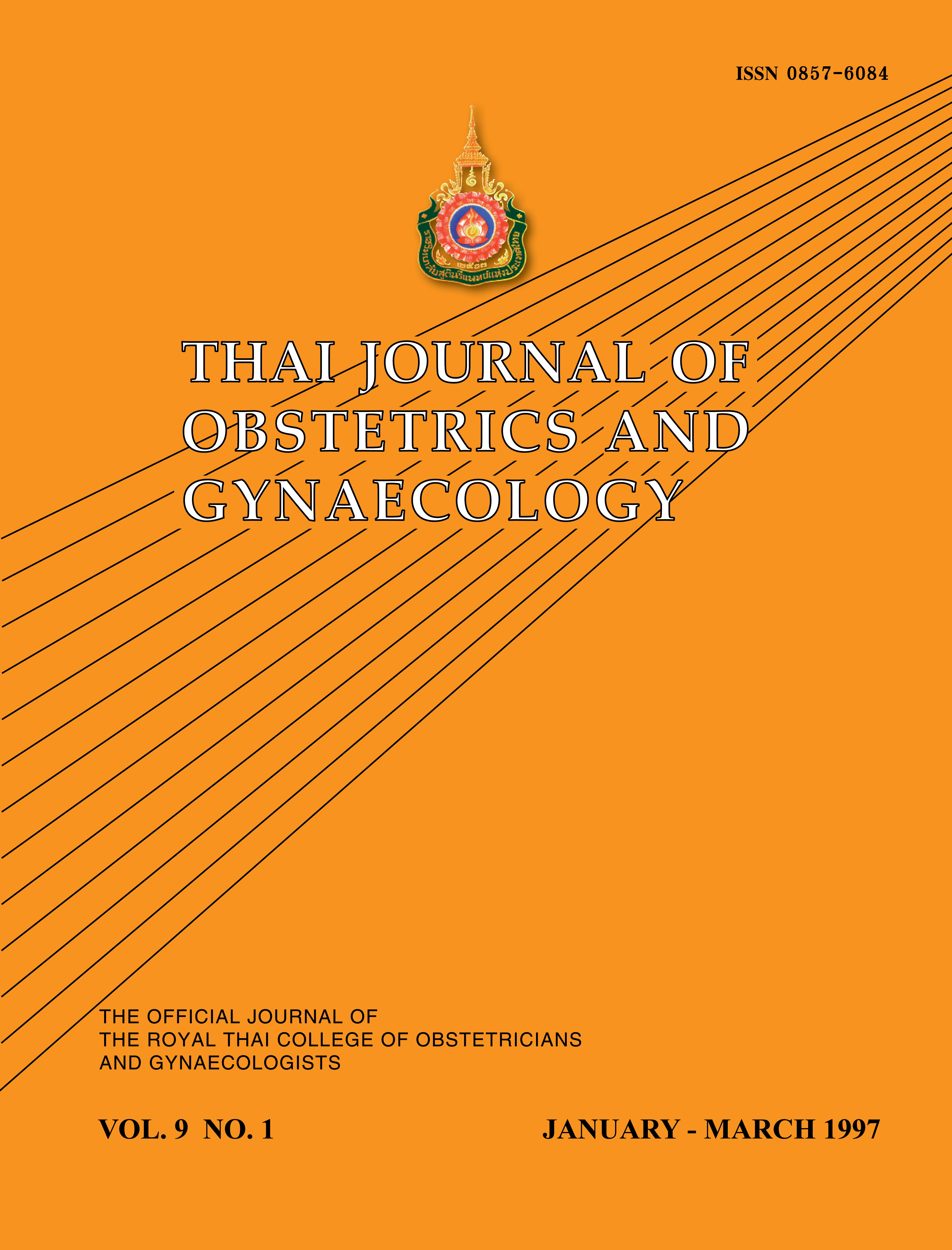Ovarian Carcinoma and Fertility Drugs : a New Dilemma ?
Main Article Content
Abstract
In September 1994 a thirty-nine year old woman was admitted for right lower abdominal pain. During 1993-1994 there were 7 ovulation induction with HMG/HCG followed by either artificial insemination or IVF-ET procedure, the last one in April. Complaints dated from that time. Right lower abdominal pain persisted and even worsened after treatment with antibiotics. After preoperative evaluation adnexectomy was performed. Multilocular highly differentiated serous papillary cystadenocarcinoma was found, displaying moderate nuclear atypia and small areas of clear-cell differentiation, with foci of necrosis and stromal microinvasion. Elevated serum CA-125 levels at the time of operation slightly decreased four weeks after (from 145 IU/ml to 124 IU/ml). Serum concentrations of CA-125 were within normal range between 6th to 8th postoperative week. Nine weeks after operation, at the end of December, severe metrorrhagia occurred and curettage was performed. Histological evaluation of the obtained material showed papillary cystadenocarcinoma endometrioid endometrium. Serum CA-125 were extremely elevated to the values of 1,360 IU/ml. In January 1995, hysterectomy, adnexectomy and omentectomy was performed. There were no apparent metastatic features during the operative procedure. CA-125 levels decreased to 110 IU/ml six weeks thereafter. From that time up to now this tumour marker was regularly determined every twelfth week and stayed within normal range. Ultrasonographic and CT examination confirmed her well-being. This study demonstrates on the direct chronological relation between hormonal stimulation of previously unremarkable ovaries and development of ovarian carcinoma.
Article Details

This work is licensed under a Creative Commons Attribution-NonCommercial-NoDerivatives 4.0 International License.


